Sometimes, when growing cucumbers, vegetable growers notice that white spots appeared on the leaves. The shade of foliage can change on bushes planted in a greenhouse, greenhouse or on unprotected beds. Often the cause of whitening is improper care. Sometimes a problem arises due to a deficiency of nutrients or the development of a disease. Also, there is a high probability of whitening after hypothermia of plants.
Content
Causes of whitening leaves of cucumbers
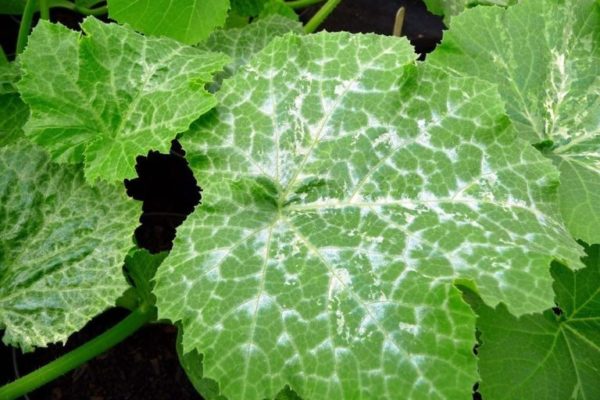
It is not always possible to unambiguously determine the reason why the leaves of cucumbers turn white when grown in a greenhouse or in open ground. Color changes due to the negative effects of external factors or the activity of pathogenic microorganisms. To accurately identify the cause of the formation of bright spots, consider the accompanying signs.
Two groups of factors are distinguished under the influence of which the leaves of the cucumbers turn white and dry:
- Failure to comply with the rules of agricultural technology, irrigation and soil preparation errors before planting, and refusal to top dress often cause white spots.
- Diseases and pests damage the surface of leaf blades. It is thinning, covered with characteristic spots. Additionally, other signs of infection occur.
You can decide what to do with cucumbers that have white leaves after determining the exact cause of this condition. A universal remedy to resolve this problem does not exist. For example, when bright spots appear as a result of a disease, folk remedies, fungicidal preparations are used. If the cold is to blame, the plants are covered with a film or other covering material.
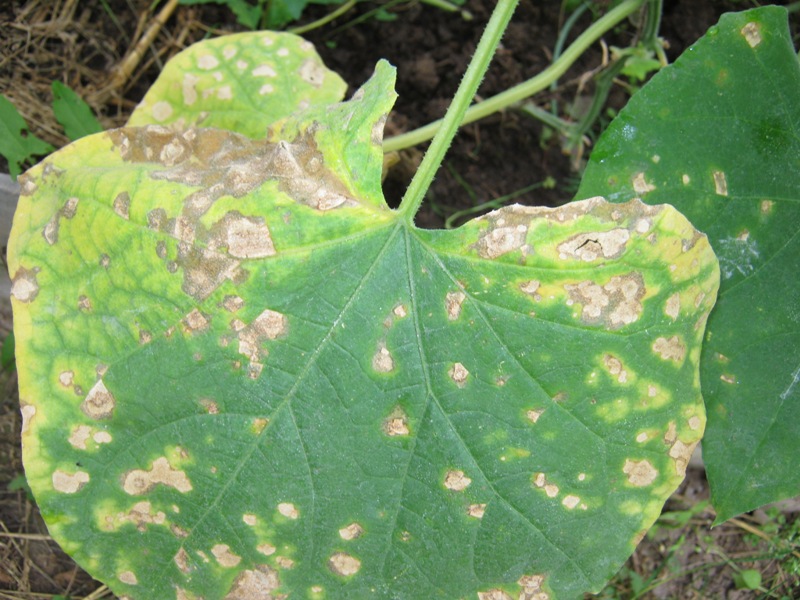 You may be interested in:
You may be interested in:Care Mistakes
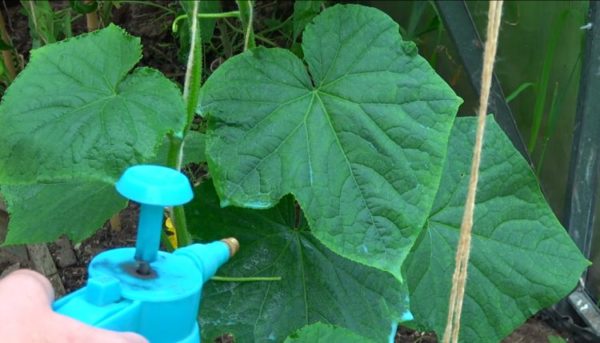
Heat-loving vegetables need special conditions for the proper development of the bush. In this regard, problems often begin immediately after the planting of seedlings of cucumbers in the ground. Sometimes the deficiency of sunlight becomes the cause of whitening. Especially often this condition occurs in plants during greenhouse cultivation. On open beds, foliage whitens much less frequently. Leaves of the lower tier are usually the first to suffer. If there are no more damages besides them, no special measures are taken.
Similar changes occur when there are not enough useful elements:
- deficiency of potassium and magnesium provokes the whiteness of the leaves of the lower tier;
- with a lack of iron and manganese, a white coating forms in combination with dark veins;
- due to insufficient copper, the top shoots are the first to wilt.
You can eliminate such problems by making the necessary feeding. Usually young plants suffer from malnutrition. After harvesting, discoloration of the foliage is a natural process of plant death.
Disembarkation time
Cucumbers grow well in warm climates. The cold is disastrous for them. Therefore, when determining the landing time, they are guided by the climate in the growing region. In Central Russia, cucumber seedlings can be planted in a greenhouse or greenhouse in early May or in late April. With landing in the open ground it is better not to rush. If the weather forecast portends cooling or freezing, the transplant must be postponed until the heat is finally established.
Watering
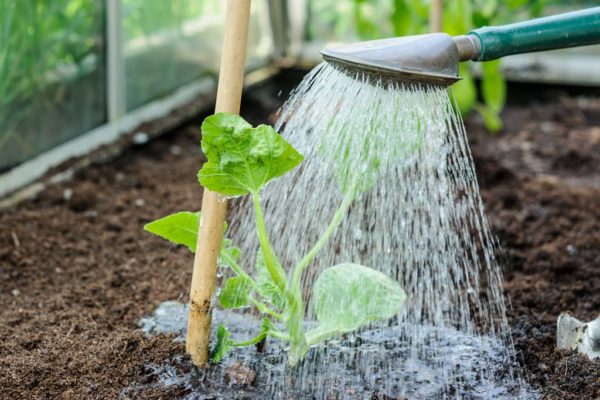
Timely irrigation is important for the proper development of the vegetable. Sometimes a deficiency of moisture or its excess leads to the fact that the leaves of the cucumbers turn white. This usually happens when growing plants in open beds, because it is more difficult to control the amount of moisture there.
In some regions of the country, too much rain falls during the summer. The increased humidity of the soil and air causes whitish spots on the leaves of the cucumber. From the abundance of moisture, the root system cannot normally receive air and begins to rot. This leads to whitening of the leaves and the gradual death of the plant.
The lack of water also negatively affects the condition of cucumber bushes. From moisture deficiency, the leaves brighten at the edges and dry out. Therefore, it is necessary to carefully monitor the condition of plants. The soil under the cucumbers should be moist, but not wet and not dry.
Soil acidity
High acidity often causes cucumber leaves to whiten around the edges. Such soil is not suitable for growing this crop. Therefore, the growth of bushes stops. To exclude this option, soil acidity is assessed.
To normalize the state of the soil, deoxidation is carried out. To do this, wood ash, dolomite flour or crushed chalk are added to the soil. It is better to do this in advance, even before transplanting seedlings to a permanent place.
Diseases and Pests
If all the rules of agricultural technology are observed, and the leaves of the cucumbers are still whitening, withering and drying out, then the cause may be diseases or infection by pests. Detecting insect activity is easy. It is enough to carefully examine the bushes and especially the underside of the leaves. It is there that the parasites prefer to hide. For the diagnosis of diseases, attention is paid to additional signs: rot, unpleasant odor, plaque on the surface of the plant.
Powdery mildew
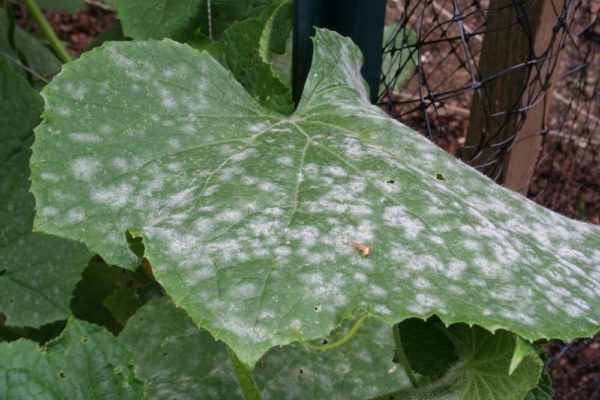
This fungal disease most often causes the whitening of the ends of the leaves and their entire surface. Favorable conditions for the appearance of powdery mildew are high humidity and low air temperature. First, a white powdery coating appears on the leaves. Then the signs of infection spread to the stem of the plant and to the fruits. The disease inhibits the processes of photosynthesis. Therefore, if untreated, the bush dies.
Powdery mildew can be treated with the following means:
- Spraying the bushes with a solution of 7 l of water and 3 l of whey. Lactic acid bacteria kill the causative agent of the disease and improve productivity. Additionally, you can add 1 cup of granulated sugar to the solution to make the treatment more effective.
- Fresh manure is poured with water and left for 3 days. Then the liquid is filtered and diluted with clean water in a ratio of 1:10. The resulting solution must be treated with infected bushes.
- With a strong spread of powdery mildew, the treatment with Topaz, Jet, Hom, and CE is effective. On open beds, plants can be sprayed with a solution of colloidal sulfur concentration of 20%. It can be used for bushes growing in a greenhouse, if the concentration is increased to 40%.
Ascochitosis
Another type of fungal infection that causes whitening of leaves in seedlings of cucumbers and adult plants. Signs of damage usually develop at the tips of leaf plates, less likely to occur on the entire surface. With the development of ascochitosis, the foliage changes its color to dirty gray and then dries out. The fruits that have already formed by this time are wrinkled.
Preventive measures are effective to combat ascochitosis:- plants are watered only with warm water;
- do not allow temperature fluctuations inside the greenhouse;
- before use, the soil for growing seedlings is steamed or spilled with a solution of potassium permanganate;
- plants are regularly sprayed with Bordeaux liquid concentration of 1%, a solution of copper sulfate or urea.
Anthracnose
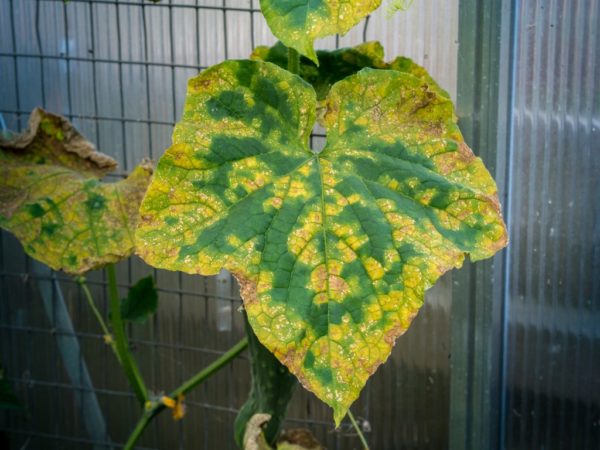
The development of this fungal disease is caused by a nutrient deficiency in moist, stale air in the greenhouse. Anthracnose provokes the appearance of white spots on the leaves of planted plants and darkening of the tips. Then the affected plants dry. Often ulcers form on the leaves of cucumber bushes when they are infected with anthracnose.
The following agents are used to treat anthracnose:
- watering plants under the root with a solution of the drug "Abiga-Pica" concentration of 0.5% or one percent Bordeaux liquid;
- spraying leaves with Polyram or copper oxychloride;
- infected bushes can be treated with “Quadris”, “Kumus” or “Strobi” preparations.
White rot
From this fungal disease, the leaves of the seedlings whiten after planting in the greenhouse. The reason is a sharp drop in temperature in the room or drafts. An additional provoking factor is the lack of ventilation. To prevent the appearance of white rot, seedlings are planted at a distance from each other, avoiding thickening.
Signs of infection with white rot are:
- wet spots on the surface of cucumbers;
- growths resembling white cotton wool at the sites of damage;
- discharge in the form of mucus.
Fungal spores enter plants through contaminated soil or untreated equipment. They penetrate into plants through damaged tissue. It is impossible to cure white rot. Therefore, infected plants are destroyed, and the earth is shed with boiling water or steamed.
White mosaic
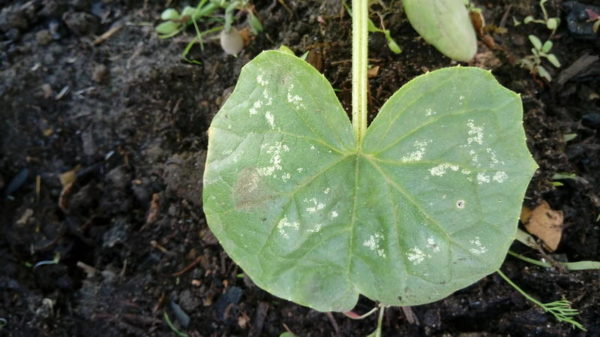
The disease refers to viral infections. Pathogenic virus enters plant tissues through damaged areas on the plant. Gradually, he moves to the root system. You can recognize the disease by white spots with a yellowish tint that appear on the surface of the leaves. An infected plant slows growth, the fruits are deformed and acquire an unpleasant taste.
Spider mite
Small parasites settle on the underside of leaf blades and suck juices out of them. Due to damage, photosynthesis worsens, and the immune defense of plants is weakened. Often, pests coexist with gray rot developing on the bottom of the stems and leaves. Infection with spider mites can be recognized by white-yellow spots on the bottom of the leaves and stunting of young bushes. Favorable conditions for the appearance of the pest are increased temperature and dry air.
Ways of struggle:
- If spider mite few plants are infected, they are treated with a solution of laundry soap. In the aisles, you can plant strongly smelling marigolds, mint, onions. These plants repel pests.
- It is possible to quickly and safely destroy the pest by planting a phytoseyulyus tick on plants. He eats the egg masonry of the parasite. Replanting is carried out every 20 days.
- In case of severe infection with a spider mite, Bitoxibacillin or Karbofos preparations are used. Processing is carried out in the evening, so that the agent has time to act overnight.
Whitefly
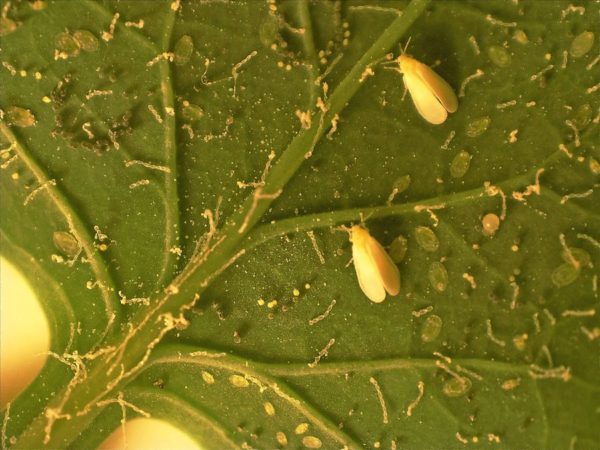
Usually whiteflies can be found in the greenhouse, but under favorable conditions they can settle on cucumbers growing in open beds. The length of adult insects is 1.5 mm. These are flying insects with bright wings. They form large colonies, settle at the bottom of the leaf. When you touch the affected bush, a swarm of small white midges rises into the air.
Insects feed on cucumber juice. To get it, they pierce the surface of the leaves. Therefore, light spots form in damaged areas. Gradually, the leaf dries and falls. In the process of feeding, whiteflies secrete a sugar secret, which contributes to the development of infections.
You can destroy the whitefly using the following tools:
- Pests are collected mechanically. To do this, make sticky traps from a sheet of cardboard and a sticky bait and place them next to infected plants.
- For the physical destruction of whiteflies, the parasite enkarzia is used. It is planted on the affected plants. When all the whiteflies are eaten, enkarsia dies.
- With massive damage to bushes, whitefly plants are treated with insecticide preparations. Well act funds "Aktara", "Actellik" and others.
White spot preparations
Means "Quadris" effectively treats plants for many diseases and prevents their reappearance. The fungicide of systemic action penetrates into plant tissues and destroys the pathogens located in them. The working solution is prepared according to the instructions. Its consumption for each plant is from 100 to 200 ml. During the growing season, processing of plantings is carried out three times with an interval of 3 to 5 weeks.
The drug "Kuproksat" is suitable for the treatment of plants in greenhouses or in open beds. It prevents the infection of vegetables with insect pests and diseases. On sale, the product comes in the form of a liquid, already ready for use. Particularly effective Kuproksat works as a means of prevention. Therefore, they need to process cotyledon leaves in seedlings before transplanting to a permanent place.
If, after germination of the seedlings, the cotyledons of the cucumbers brighten, they are treated with the Jet. On sale, the drug is found in powder form. Before use, it is diluted with water according to the instructions in an amount of 100 g of substance per 10 l of water. The working solution is used immediately, since during storage it loses its properties. Spraying is carried out twice a month before harvesting begins.
Folk remedies for whitening foliage
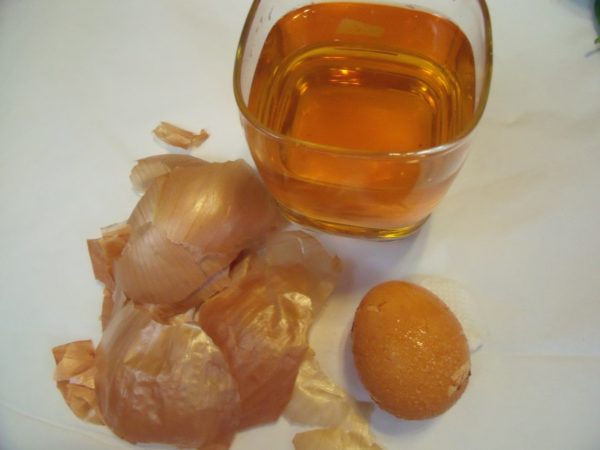
To protect cucumbers from many pests, a decoction based on onion husks is used. For 300 g of onion flakes take 5 l of water. The mixture is brought to a boil over low heat and cooked for 30 minutes. Then leave to cool in a sealed container. After 12 hours, the liquid is filtered and diluted with water in a ratio of 1: 5. With this solution, the diseased bushes are sprayed and watered the soil under them.
Bread infusion is made from a stale loaf. The rolls are crushed and filled with clean water. In a sealed container, the mixture is left for 12 hours. Then squeeze the bread pulp, add to the liquid 1 tbsp. l iodine and dilute 10 liters of pure water. The solution is sprayed with leaves of cucumbers every 15 days to maintain a natural green color.
Prevention
So that when growing cucumbers there are no problems, it is recommended to use good seeds of zoned varieties for sowing. Buy them better in trusted stores. Before sowing seedlings, it is imperative to process the seed and soil.
During the growing season, the bushes are regularly inspected so as not to miss the first signs of the disease or infection by pests. Additionally spray the bushes with preparations protecting the plants. Effectively acting means "Fitosporin-M", "Amulet".
When grown in a greenhouse or greenhouse, maintain a healthy microclimate. Regularly open the vents to ventilate and reduce humidity.At the same time, sudden changes in temperature or drafts should not be allowed.
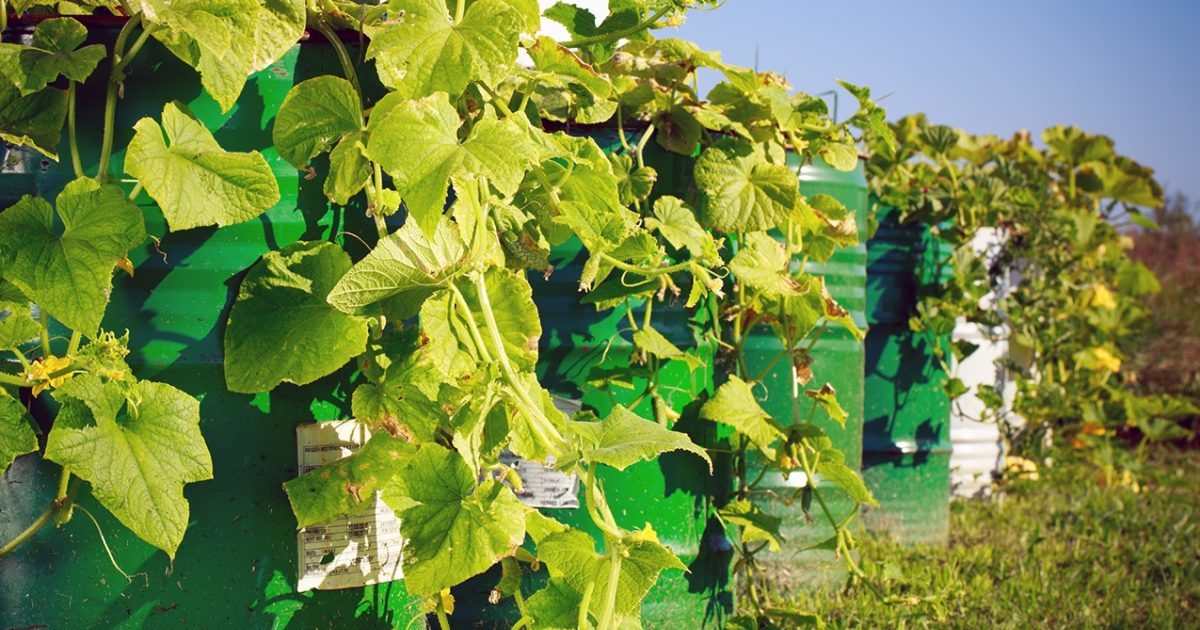 You may be interested in:
You may be interested in:Bushes are watered early in the morning or in the evening when there is no active sun. For irrigation use only warm water. You can type it in barrels. There it settles down and heats up during the day by the sun's rays. Water is poured under the root, trying not to fall on the leaves.
White spots on the leaves of cucumbers appear as a result of diseases, lack of nutrients or non-compliance with agricultural regulations. To save the plant, it is necessary to identify the cause of the negative changes and conduct treatment.

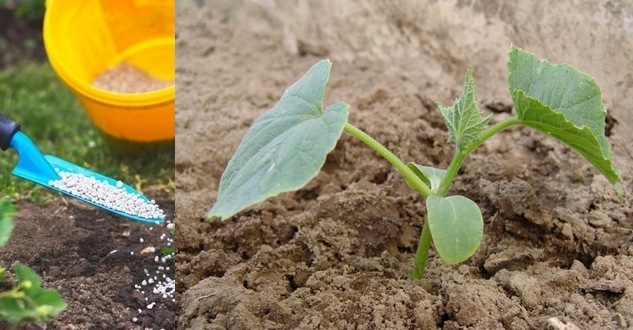
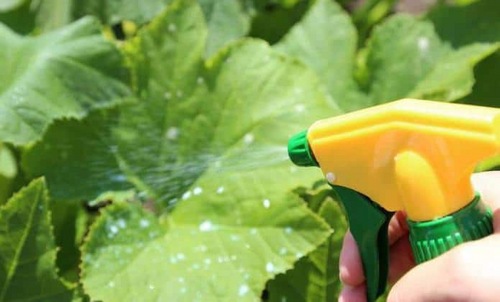
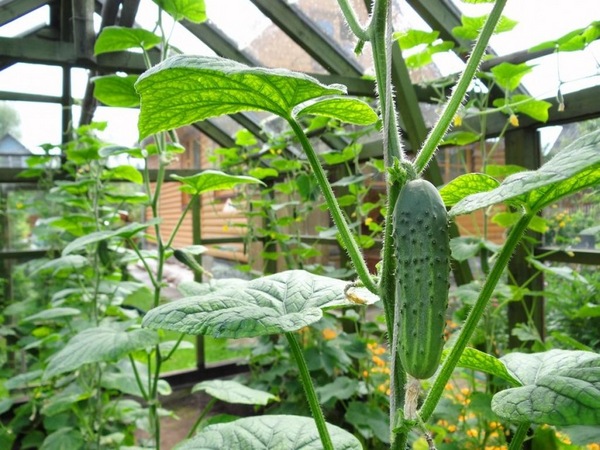
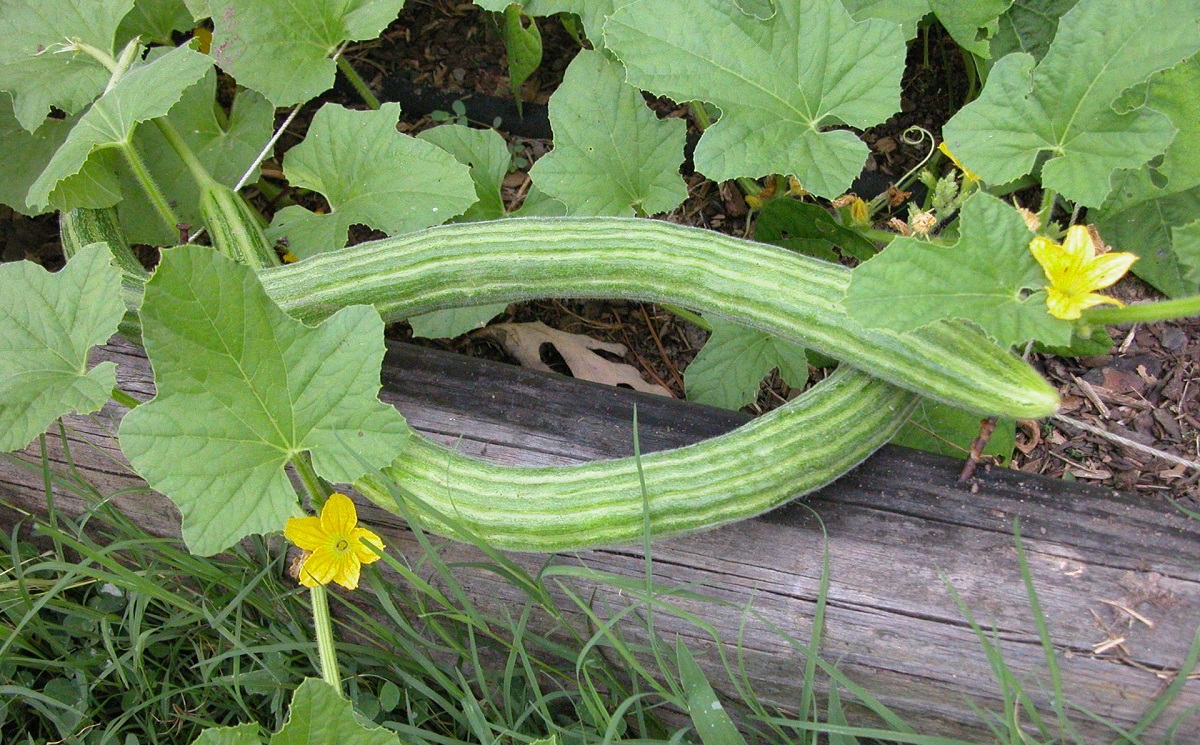 Armenian cucumber with melon flavor: description and characteristics, reviews
Armenian cucumber with melon flavor: description and characteristics, reviews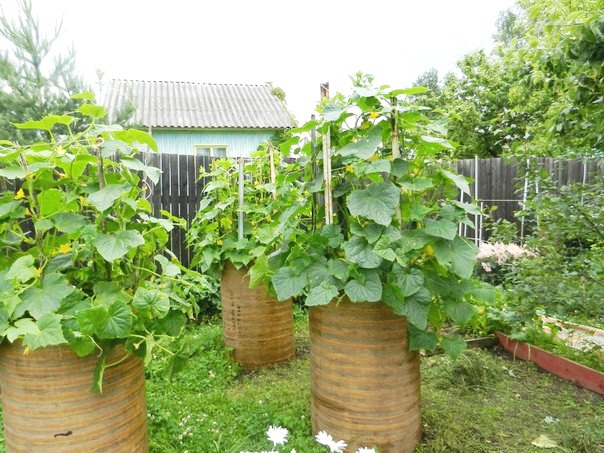 Do-it-yourself vertical beds for cucumbers: schemes, photos
Do-it-yourself vertical beds for cucumbers: schemes, photos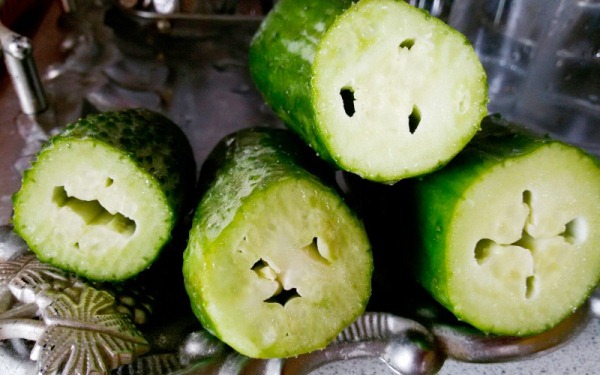 Hollow cucumbers: reasons for the appearance of hollow, what to do
Hollow cucumbers: reasons for the appearance of hollow, what to do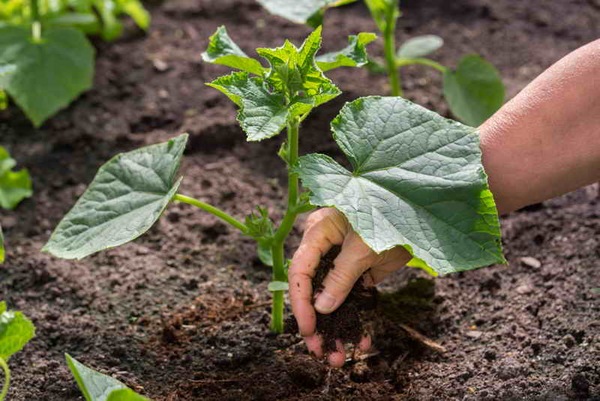 Which manure is best for cucumbers: application, how to breed
Which manure is best for cucumbers: application, how to breed